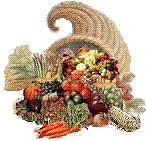
you came from
Cholent: An Historical Stew
When the Sephardic Jews of Spain were expelled in 1492, they took with them to Morocco and North Africa the tradition of making hamin for the Sabbath. They cooked their overnight stew in the same manner, using local ingredients and flavors. Mutton replaced beef, and rice-- cooked in a cloth bag to prevent sogginess-- sunstituted for barley. The mixture was spiced with hot red peppers, saffron or turmeric, and ground coriander seed, according the Mediterranean culinary scholar Clifford A. Wright. Syrian Jews place the mixture inside a hollowed-out piece of pumpkin or squash, Wright notes, and Jews throughout the Mediterranean often add chickpeas or cracked wheat as well.
Made in a covered pot, the dish also became known by a new name--dafina (also spelled adafina or tafina), from the Arabic word for "covered." Just as in Europe, families often took their covered pots to communal ovens for cooking. The pots were sealed with a flour and water paste, and baked overnight, then retrieved on the way home from synagogue on Saturday.
Many recipes for dafina call for huevos haminados, a unique and delicious version of hard-boiled eggs. The eggs, which are cooked in their shells, are dyed a deep reddish-brown color by the onion skins that are usually included in dafina. Even better than the rich color is the creamy texture and delicious flavor the eggs absorb from the other ingredients.
Dafina may also include a "centerpiece" ingredient, such as a giant meatball made from ground lamb, or a dumpling called kouclas. The dumpling is usually made from bread, but may also be made from matzo meal during Passover. Some dafina recipes call for calves' or lambs' feet or tongues as the central ingredient.
Traditional dafina recipes are not particularly low-fat, you may want to adapt them to suit your diet. Trim visible fat from meat. One way to further reduce fat is to prepare the dafina two days ahead of time and refrigerate it until it's thoroughly chilled. When the mixture is cold, the fat will rise to the surface and make a solid layer. Remove as much excess fat as you like, then simply reheat the mixture on Friday afternoon.
Dafina is certainly hearty enough to serve as a complete meal, but some Mediterranean cooks serve couscous alongside it to soak up the gravy. If you like cholent, try this big assortment of cholent recipes. Find more about cholent at the Owens Mill Torah Center. Read a moving account of cholent and torah in Uganda here.
